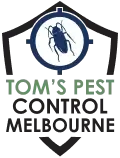Prompt, Affordable Same-Day Pest Control in Melbourne – From $129.
- Home
- Pest Treatments
- Termite Inspection & Treatment
- Ant Pest Control
- Bed Bug Treatment
- Beetle Pest Control
- Bird Proofing
- Borer Pest Control
- Cockroach Control
- Flea Treatment
- Fly Control
- Fox Trapping
- Mites Control
- Mosquito Pest Control
- Moth Control
- Possum Removal Service
- Rodent Control
- Silverfish Treatment
- Spider Control Treatment
- Wasp Control Services
- End of Lease Pest Control
- Commercial Pest Control
- Office Pest Control
- Restaurants & Cafes Pest Control
- Hospitality Pest Control
- Education Facilities Pest Control
- Hospital & Aged Care Pest Control
- Pest Control Food Industry
- Factories & Warehouses Pest Control
- Government Buildings Pest Control
- Assets & Facilities Pest Management
- Farming and Agriculture Pest Control
- Strata Pest Control
- Construction Pest Control
- Termites
- Pest Info
- Pest Inspections
- Contact
- Home
- Pest Treatments
- Termite Inspection & Treatment
- Ant Pest Control
- Bed Bug Treatment
- Beetle Pest Control
- Bird Proofing
- Borer Pest Control
- Cockroach Control
- Flea Treatment
- Fly Control
- Fox Trapping
- Mites Control
- Mosquito Pest Control
- Moth Control
- Possum Removal Service
- Rodent Control
- Silverfish Treatment
- Spider Control Treatment
- Wasp Control Services
- End of Lease Pest Control
- Commercial Pest Control
- Office Pest Control
- Restaurants & Cafes Pest Control
- Hospitality Pest Control
- Education Facilities Pest Control
- Hospital & Aged Care Pest Control
- Pest Control Food Industry
- Factories & Warehouses Pest Control
- Government Buildings Pest Control
- Assets & Facilities Pest Management
- Farming and Agriculture Pest Control
- Strata Pest Control
- Construction Pest Control
- Termites
- Pest Info
- Pest Inspections
- Contact
Bull Ants
Bull Ants Identification & Control
Bull ants have an impressive size and differ from other ant species in behaviour. They are known to be highly aggressive, so they are likely to sting humans if they feel threatened. These ants have excellent eyesight, allowing them to hunt prey at 1 metre. Just like other ants, this ant species builds colonies underground.
Bull ants are huge and can grow up to 40 mm. They can be easily identified because of their big eyes and long, slender mandibles. These ants have a superior vision that allows them to track and follow their prey from a distance of three feet.
In total, there are approximately 90 species of bull ants found in Australia. Many of these species have brighter-looking heads or red or orange abdomens. The smaller bull ants are known as jumper ants that aggressively jump on their intruders.
Bull ants are found in urban areas, forests, and heath throughout Australia. They like to nest outside below soil, rocks, and logs. They can also live in coastal regions, sandplain, and desert areas.
Their diet includes nectar and other plant liquids, fruits, seeds, and insects. It is common to find these ants near various food sources as they prefer finding food and then carrying it back to their nesting places.
The bull ants’ life cycle involves 4 stages: eggs, larvae, pupae, and mature. For an ant egg to transform into an adult requires several months. When the bull ant queen mates, she begins digging a hole in her nest to lay her eggs there safely.
These ants can build 2 types of nests, simple and complex. The simple nests have a notable shaft in the middle of the hill, and the complex ones are built underground and surrounded by mounds.
Several bull ant species do not have colony workers, so the raiding queen enters the nest of another species, attacks and kills the resident queen and takes over the colony.
Danger to Humans
These ants are aggressive and can sting humans if they feel threatened. Their sting can be painful and must be managed with an ice pack. In case of an allergic reaction, it is essential to seek medical help.
Trust The Bull Ant Removal Experts
Bull ants are large, aggressive and have a powerful sting that can hurt if you’re in their way. That’s why it’s essential to remove these creatures from your property by hiring pest control experts.
Tom’s Pest Control is your ideal choice for eliminating various pests from your property. We use a combination of traps, baits, and other pest control methods to ensure the bull ants have been eliminated. In addition, our pest control experts are trained to handle any pest situation, no matter how big or small.
At Tom’s Pest Control, we understand the dangers of bull ants and their potential to disrupt your home or business. That’s why we use modern and safe pest control technologies and techniques for pest removal in Melbourne. Our pest control experts will work quickly and efficiently to remove the bull ants and prevent them from returning.
Call Us
Don’t wait any longer to address your pest problem. Instead, call the pest control experts at Tom’s Pest Control now for reliable, safe, and effective bull ant removal.
Frequently Asked Questions
Do Bull Ants Attack Humans?
Bull ants are known for their aggressive nature and are likely to attack humans if they feel threatened. They attach to their victim with their strong mandibles and then use their stinger. Their bite can be painful and result in allergic reactions. Therefore, avoiding entering areas where this species is commonly found is recommended.
Where Can You Find Bull Ants?
Bull ants are primarily found in Australia. These ants live in woodland areas and forests and are also seen in many metropolitan areas. They are likely to gather and love in areas with plentiful food sources.
Where Do Bull Ants Build Their Nests?
Bull ant nests are built several metres below the ground, so the chance of you seeing them is rare. These nests often have small entrances that are difficult to spot. Bull ants do not hesitate to attack intruders of any size if they come too close to their nests.

